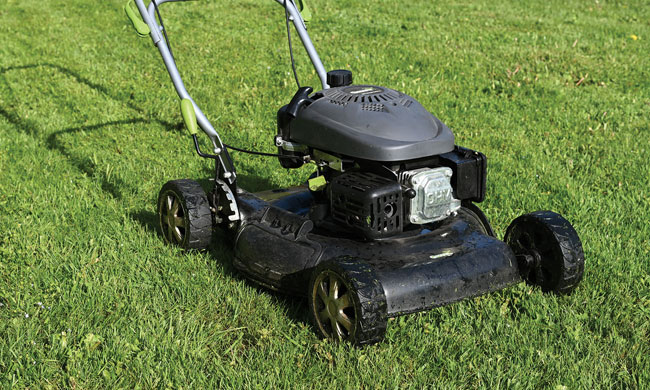Live Better
How to spend more time outdoors

Getting outside to enjoy the great outdoors can reduce the likelihood that a person will live a sedentary lifestyle that can negatively affect long-term health. But many adults are spending too much time indoors.
In its 2014 OUT is IN national survey, the National Recreation and Park Association found that 28 percent of adults in the United States do not spend time outside daily. The survey, conducted by Ipsos Public Affairs on behalf of the NPRA, asked 1,005 adults to share their opinions and behaviors regarding outdoor time. While 35 percent of respondents said work was getting in the way of their spending time outdoors, 39 percent said their computers, tablets, smartphones, and televisions were keeping them indoors.
Though it might be difficult to cut back on hours at the office, adults do have the capacity to cut back on their screen time. Using that newfound free time to get outdoors can pay dividends for years to come, as the National Center on Health, Physical Activity and Disability notes that the potential consequences of living a sedentary lifestyle are severe. According to the NCHPAD, one study indicated a 40 percent decrease in cancer mortality among physically active persons compared to those who were inactive. Physical activity also helps to prevent insulin resistance, which is the underlying cause of type 2 diabetes.
While you don’t need to get outdoors to be physically active, men and women who find themselves bored by workouts at the gym or at home may be more likely to embrace physical activity if they can get their exercise outdoors. The following are three great ways to spend more time enjoying all that nature has to offer.
- Take up hiking. While some hiking trails are best left to seasoned hikers, many are built for hikers of all ages and abilities. Men and women who are overweight should not be intimidated by hiking, as even the simplest trails can help them get back on a healthy track. Men and women who incorporate hiking into their regular routines can lower their risk of heart disease and improve their blood pressure and blood sugar levels. The American Hiking Society also notes that research has shown that hiking can positively affect mood by helping to combat the symptoms of stress and anxiety.
- Ride a bike to work. Adults whose homes are in close proximity to their offices may want to try riding a bike to work instead of relying on their cars or mass transportation. Cycling improves cardiovascular fitness and increases muscle strength and flexibility. In addition, the stress-relieving properties of exercise can certainly be ascribed to cycling, which may even help adults prevent stressful episodes by relieving them of the burden of sitting in rush hour traffic.
- Grow your own foods. While the cost of fruits and vegetables may not be busting your monthly budget, growing your own fruits and vegetables is a cost-effective way to find more time for the great outdoors. In addition, a study from researchers in the Netherlands suggested that gardening is better for fighting stress than reading indoors.
Nature awaits, and adults should know that some playtime in the great outdoors is not just for kids
Live Better
Steps to get your yard ready for spring

(Family Features) As the weather begins to warm and days get longer, it’s important to begin preparing your yard for a healthy growing season. While factors like climate, soil type and grass type can all impact how your yard grows, there are a few steps you can take during the spring months to help your lawn thrive.
From dethatching and aerating to fertilizing and mowing, tackling these simple chores can help ensure your yard looks its best and is prepared to fight off seasonal weeds, disease and drought.
Tune Your Mower
Before it’s time for the first mowing of the season, inspect your mower and perform any routine maintenance necessary. That goes beyond sharpening, or replacing, the blade, and includes changing the oil, spark plugs and filter as well as filling with a fresh tank of gas.
Loosen the Thatch Layer
While it’s important to avoid working on your lawn until after the final freeze to avoid damaging the grass, raking your yard with a spring tine rake to loosen thatch – the layer of leaves, roots and dead grass that builds up between live grass and soil – before the first mow is equally important. Be sure to rake when the soil is dry; if it’s too soft or muddy, you may pull up healthy grass crowns.
Combat Compacted Soil
If your soil has become compacted – likely the effect of heavy foot traffic – and is too dense for water, air and other nutrients to reach the roots of your grass, aerating can help break it up and reduce thatch. A core, or plug, aerator can introduce tiny holes into your soil by removing plugs of grass and soil, which lets nutrients more easily reach the roots. An added bonus, the plugs can decompose on top of your grass, supplying more nutrients.
Fill in Bare Spots
If your lawn is looking sparse, overseeding, which involves spreading grass seed over your existing lawn, can help fill in bare spots. Be sure to choose the right type of seed for your climate and soil type to ensure proper growth. Applying a slow-release nitrogen fertilizer at the same time can provide additional nutrients that are important for promoting healthy growth.
Start Seasonal Mowing
When the ground is dry enough and your grass is long enough to require cutting, begin seasonal mowing. Be sure to use proper techniques, including varying your mowing direction each time to avoid creating patterns or ruts, and avoid cutting grass too low, which can make the lawn more susceptible to weeds and drought stress. In general, never remove more than one-third of the grass blade at a time.
Find more tips to help get your yard ready for warm weather at eLivingtoday.com.
Photo courtesy of Unsplash
SOURCE:
eLivingtoday.com
Live Better
6 tips to improve sleep quality for overall well-being

(Family Features) Despite a rising number of people searching for the term “sleep” in 2023, nearly 1 in 3 U.S. adults report not getting enough of it, per the Centers for Disease Control and Prevention.
As a foundation for overall well-being, getting quality sleep is key to achieving goals and being present in daily life. Without it, you’re more likely to lack the stamina and energy to follow through on your ambitions.
To help people realize the foundational role sleep plays in everyday successes, Natrol – a leading sleep, mood and stress supplement brand based on Nielsen data – alongside Dr. Jess Andrade are working together to help people improve their sleep quality and habits so they can conquer their wellness goals this year and beyond.
“From consistent exercise to eating healthy and even daily journaling, it may seem like all your priorities are in order, but without sleep, you won’t be able to reap the full benefits of your hard work,” Andrade said. “Often overlooked, getting quality sleep is a fundamental piece to improving overall wellness and it doesn’t have to be complicated. Creating small, achievable changes in our daily sleep routines can lead to long-lasting lifestyle habits for the better.”
Consider these tips from Andrade to help improve your sleep quality so you can achieve your goals.
1. Prioritize Movement and Light Exposure in the Morning
Whether you’re a yogi or prefer a simple stretch when your feet hit the floor, movement and light during the day can help stimulate quality sleep later that night.
2. Understand Sleep Gains are Just as if Not More Important Than Gym Gains
If you’re focusing on fitness goals, you’ll need adequate sleep to see successful results. If you’re a morning workout warrior, schedule earlier bedtimes to ensure you get the recommended 7-8 hours of sleep. For evening workouts, aim to end your sweat session as early in the evening as possible; too much physical activity before bed can keep you up at night.
3. Make Your Bedroom a Sanctuary
Make your bedroom a sleep sanctuary. Keep the room dark, noise-free and comfortable with the thermostat set at 65-67 F for better sleep conditions.
4. Set Nightly Rituals to Unwind
Create nightly rituals that activate circadian rhythms and allow your body to unwind. Consider activities that relax you the most, like taking a bath, reading a book, journaling or sipping decaffeinated nighttime tea.
5. Try Incorporating a Drug-Free Sleep Aid
If you follow good bedtime habits but still occasionally struggle to fall or stay asleep, try a low-milligram melatonin supplement, like those from Natrol, that are designed to help you get a good night’s sleep so you wake up refreshed and ready to conquer your goals.†
6. Follow the 10-3-2-1-0 method
To help you fall asleep and wake up feeling revitalized, Andrade recommends the 10-3-2-1-0 method: Decrease caffeine intake at least 10 hours before bed. Avoid eating bothersome foods 3 hours prior to heading to off to sleep. Engage in relaxing activities like reading at the 2-hour mark and cut out screentime with 1 hour to spare. Ultimately, these habits can lead to zero times hitting snooze the next morning.
Find more ways to improve sleep habits by visiting Natrol.com.
† These statements have not been evaluated by the Food and Drug Administration. These products are not intended to diagnose, treat, cure, or prevent any disease.
SOURCE:
Natrol
Live Better
Find your perfect spring escape

(Family Features) Whether you’re a family with kids or a young professional looking for a getaway, it isn’t too late – or out of budget – to plan a memorable spring trip. All you need is a full tank of gas and your furry best friend to make an unforgettable getaway.
Data from online travel agency Booking.com shows that half of traveler’s plan to choose vacation destinations where the cost of living is less than their hometowns in 2024. Exploring lesser-known destinations with a variety of outdoor activities, opting for a road trip with your pet rather than a large group and traveling outside of peak season can all help make adventures more affordable.
To help travelers feel confident selecting their road trip destinations this spring, Motel 6, where pets always stay for free, and Bert Sperling’s Best Places recommend these undiscovered destinations that offer sight-seeing, access to dog parks, cultural experiences, green spaces, authentic cuisine, dog-friendly restaurants and affordable lodging.
Santa Fe, New Mexico
Dive into desert culture in Santa Fe with stunning views of the Sangre de Cristo mountains, Pueblo-style architecture, historic landmarks and pet-friendly dining patios. With near-endless activities like shopping for handcrafted jewelry, visiting the Museum of International Art Folk or walking the Santa Fe Plaza, there are entertainment options for everyone to enjoy. There are also plenty of affordable lodging options within walking distance of downtown attractions.
Branson, Missouri
Situated in the iconic Lake of the Ozarks, Branson is a dream small-town getaway for family vacations with a plethora of dining and entertainment options such as Silver Dollar City, Dolly Parton’s Stampede and the Titanic Museum. The city has a dog-friendly culture with plenty of parks and outdoor activities. Located just two miles from many of these local attractions, Motel 6 Branson welcomes the whole family, including those on four legs, at no additional cost. This location also offers amenities like free Wi-Fi, an expansive cable channel selection, a microwave and refrigerator in each room and guest laundry facilities.
Tempe, Arizona
If you’re seeking sunshine and fresh air, look no further than Tempe, a vibrant city located just south of Phoenix. From festivals and outdoor activities like golfing, hiking, kayaking or stand-up paddle boarding on Tempe Town Lake to visiting the Tempe Center for the Arts or local pet-friendly eateries, there are plenty of things to do in the low desert valley.
Chattanooga, Tennessee
For those looking to escape fast-paced city life with an outdoor getaway, Chattanooga is a perfect destination to enjoy outdoor activities, such as exploring Lookout Mountain or walking along the Tennessee River. In a city full of culture and history, visitors can enjoy local artwork at the Hunter Museum of American Art or go sightseeing in the historic Bluff View Art District. As the temperatures rise, embrace the rays at the seasonal pool alongside pet-friendly lodging at Motel 6 Chattanooga.
As you look to plan your getaway, visit Motel6.com to find pet-friendly and affordable lodging accommodations as well as more ideas to point you in the right direction on your spring excursion.
Photo courtesy of Shutterstock
SOURCE:
Motel 6
-

 NEWS1 year ago
NEWS1 year ago2 hurt, 1 jailed after shooting incident north of Nocona
-

 NEWS5 months ago
NEWS5 months agoSuspect indicted, jailed in Tia Hutson murder
-

 NEWS12 months ago
NEWS12 months agoSO investigating possible murder/suicide
-

 NEWS1 year ago
NEWS1 year agoWreck takes the life of BHS teen, 16
-

 NEWS9 months ago
NEWS9 months agoMurder unsolved – 1 year later Tia Hutson’s family angry, frustrated with no arrest
-

 NEWS12 months ago
NEWS12 months agoSheriff’s office called out to infant’s death
-

 NEWS1 year ago
NEWS1 year agoBowie Police face three-hour standoff after possible domestic fight
-

 NEWS1 year ago
NEWS1 year agoDriver stopped by a man running into the street, robbed at knifepoint








